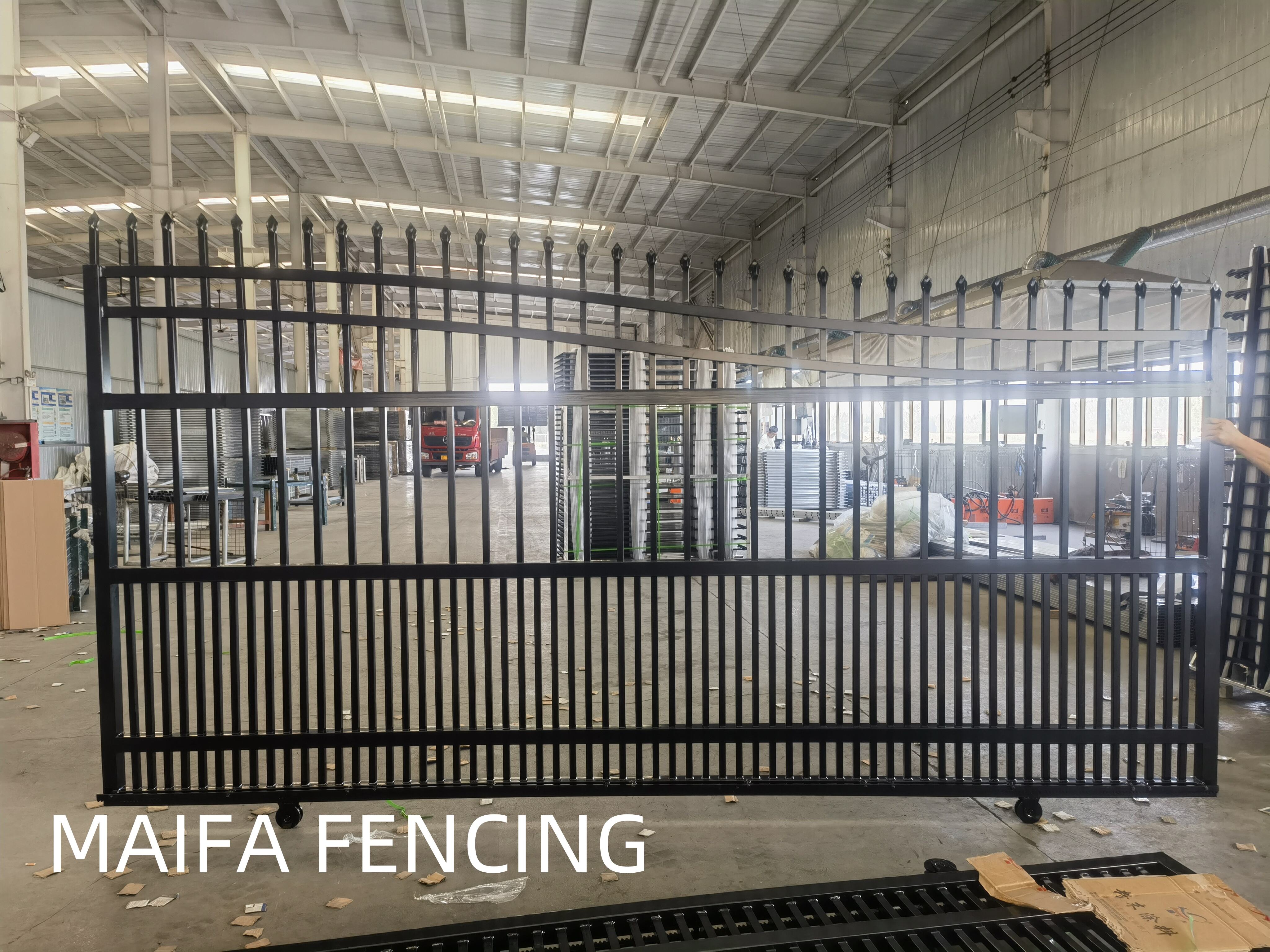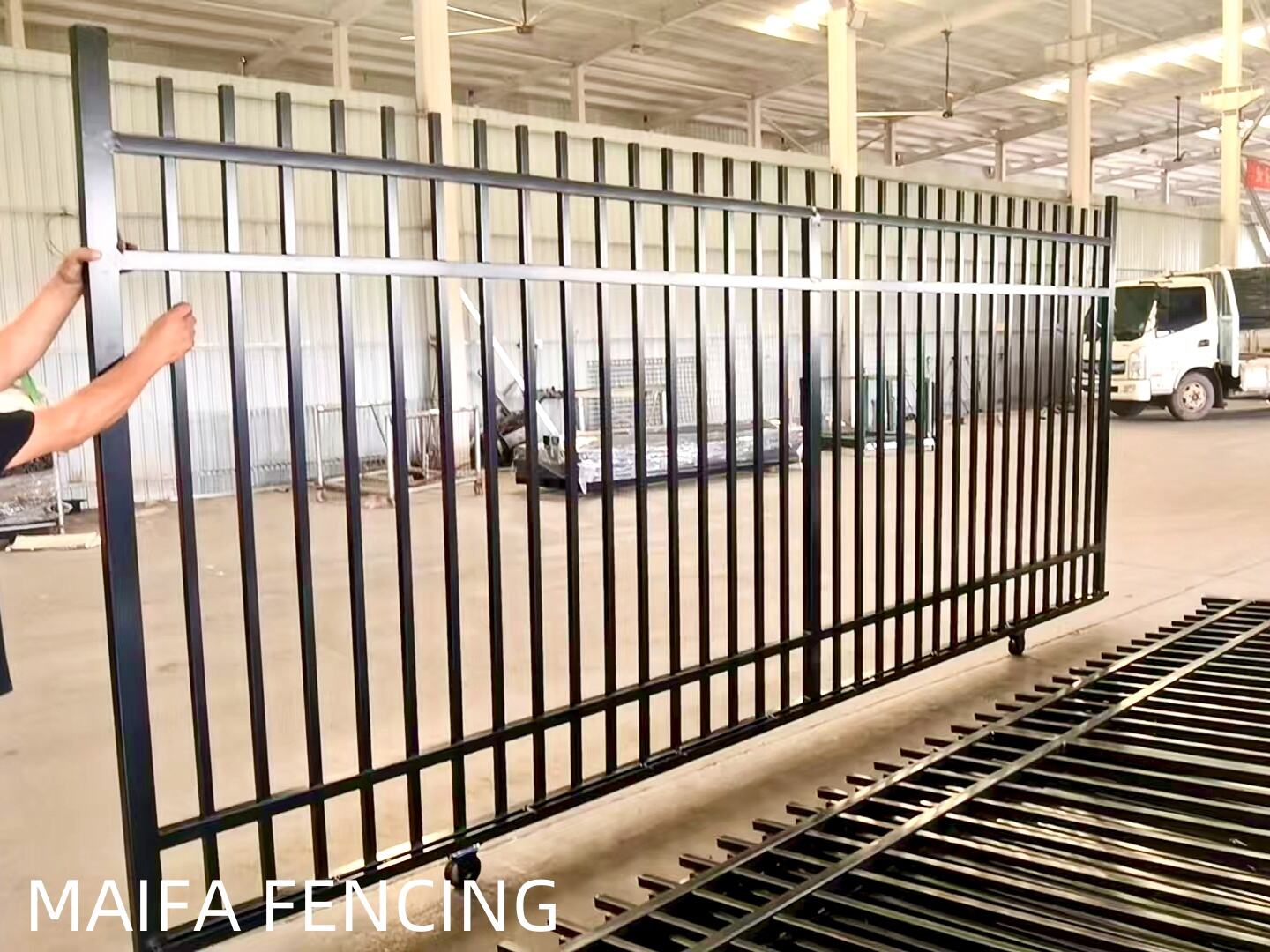Wymagania i przepisy dotyczące tymczasowych ogrodzeń
Rozumienie lokalnych praw strefowania
Zapoznanie się z lokalnymi przepisami dotyczącymi zagospodarowania terenu przed ustawieniem tymczasowego ogrodzenia ma duże znaczenie. Przepisy gminne regulują m.in. maksymalną wysokość ogrodzeń, miejsce ich lokalizacji oraz czas ich postawienia. Te zasady mogą się znacznie różnić w zależności od miejsca zamieszkania. W celu uzyskania szczegółowych informacji warto zajrzeć na strony miast lub zadzwonić do lokalnego urzędu planowania przestrzennego. Kontrahenci znający się na przepisach budowlanych mogą również udzielić cennej wskazówki. Często napotyka się problemy związane z maksymalnymi limitami wysokości ogrodzeń lub koniecznością pozostawienia wolnej przestrzeni między ogrodzeniem a drogą czy sąsiednimi działkami. Tego typu wymagania mają oczywiście wpływ na terminy realizacji projektów oraz ich ostateczny koszt.
Kiedy potrzebujesz pozwolenia na tymczasowe ogrodzenie?
Zwykle zezwolenia na tymczasowe ogrodzenie stosuje się na przykład w strefach budowy lub podczas dużych zgromadzeń publicznych. Chodzi głównie o to, aby wszystko było zgodne z przepisami bezpieczeństwa i estetyki ustalonymi przez miasto lub gminę. Jednak czasami sprawa się komplikuje. Nie wszystkie sytuacje wymagają takich zezwoleń. Weźmy na przykład drobne prace remontowe przy domu – często montaż ogrodzenia w ogródku nie wymaga zezwolenia. Chcesz mieć pewność? Sprawdź lokalne przepisy budowlane, ponieważ różnią się one w zależności od miejsca. Kontrahenci, którzy zaniedbują sprawdzenie tych reguł, często kończą płaceniem grzywien lub muszą później rozebrać swoje dzieło. Wielokrotnie widzieliśmy przypadki, w których ludzie sądzili, że oszczędzają czas, a potem napotkali problemy w dalszym etapie.
Zgodność w obszarach krytycznych dla ogrodzeń przenośnych
Montaż przenośnych ogrodzeń w ważnych miejscach, takich jak tereny podmokłe czy miejsca historyczne, oznacza konieczność przestrzegania specjalnych przepisów środowiskowych. Uzyskanie zgodności często wiąże się z dodatkową dokumentacją i kontrolami ze strony lokalnych organizacji ds. ochrony środowiska. Gdy wszystko zostanie wykonane poprawnie, pomaga to zachować naturalne tereny i zabezpieczyć dziedzictwo historyczne danej lokalizacji. Na przykład, weźmy pod uwagę niedawne przedsięwzięcie budowlane prowadzone w pobliżu terenów podmokłych, gdzie starannie przestrzegano wszystkich przepisów ochrony środowiska. W tym przypadku wszystko zakończyło się pomyślnie dla wszystkich stron. Z drugiej strony, zaniedbanie tych procedur może kosztować firmy tysiące złotych kary i poważnie opóźnić realizację projektów. Niektóre firmy doświadczyły tego na własnej skórze, napotkawszy nieoczekiwane utrudnienia spowodowane zaniedbaniem odpowiednich procedur.
Krok po kroku instalacja tymczasowych paneli ogrodzeniowych
Przygotowanie terenu i stabilność gruntu
Przygotowanie terenu to pierwszy krok przy montażu tymczasowych paneli ogrodzeniowych. Przygotowanie miejsca oznacza usunięcie całego zbędnego śmieciu i sprawdzenie, z jakim rodzajem gleby mamy do czynienia, aby zapewnić stabilność podłoża. Należy również zwrócić uwagę na zawartość wilgoci, ponieważ mokra ziemia może spowodować problemy w przyszłości. Warto skorzystać z higrometru i być może testera gleby, aby określić, jak bardzo jest ona zwięzła. Bez tego ogrodzenie nie będzie stać prosto. Po usunięciu wszystkiego z powierzchni, nadszedł czas na właściwe wyprostowanie terenu. To pomoże ustalić, gdzie dokładnie należy wyznaczyć granice i zaznaczyć miejsca montażu, by uniknąć zamieszania. Dobrze sprawdzają się znaczniki lub wbite w ziemię kołki, które wyznaczą przebieg ogrodzenia. Wykonanie tego wcześniej pozwoli uniknąć problemów w trakcie faktycznego montażu paneli.
Montaż elementów siatki łańcuchowej
Montaż paneli siatkowych zaczyna się znacznie sprawniej, gdy dysponuje się odpowiednim sprzętem, w tym napinaczami, słupami i złączkami. Zacznij od przymocowania siatki do słupów nośnych, dbając o to, aby wszystko było dobrze napięte i nie zwisało w żadnym miejscu. Ustawienie słupów wymaga szczególnej staranności – muszą być zakotwiczone wystarczająco głęboko w ziemi, aby całe ogrodzenie mogło wytrzymać wiatr i inne siły, które mogą na nie działać. Schematy są bardzo pomocne podczas instalacji, ponieważ pokazują dokładnie, co należy zrobić na każdym etapie, od naciągania metalowej siatki po prawidłowe rozmieszczenie słupów. Większość ludzi uważa te wizualne instrukcje za nieocenione przy zrozumieniu szczegółów, które są istotne przy montażu czegoś takiego.
Zabezpieczanie paneli przed oddziaływaniem wiatru
Utrzymanie tymczasowych paneli ogrodzeniowych przed wiatraniem w silnym wietrze jest naprawdę ważne, jeśli mają one pozostać na swoim miejscu w trudnych warunkach pogodowych. Większość ludzi umocowuje je za pomocą mocnych kołków wbitych głęboko w ziemię oraz dodatkowych worków z obciążeniem przy punktach bazowych, szczególnie tam, gdzie porywy wiatru są silniejsze. Wszyscy widzieliśmy te ogrodzenia, które po prostu się zawalają pod naporem nagłych burz, dlatego prawidłowa instalacja odgrywa kluczową rolę. Nie zapomnij co kilka tygodni obejść obwód ogrodzenia i sprawdzić, czy nie ma chwiejnych fragmentów lub luźnych połączeń między panelami. Krótki przegląd może zaoszczędzić wiele godzin pracy przy ponownej instalacji później. Konserwacja nie dotyczy tylko wyglądają – przede wszystkim zapewnia bezpieczeństwo osobom przebywającym w ogrodzonym obszarze.
Normy bezpieczeństwa dla ogrodzeń budowlanych
Wymagania dotyczące wysokości i perforacji
Minimalna wysokość tymczasowych ogrodzeń budowy odgrywa dużą rolę w zapewnianiu bezpieczeństwa na placu. Większość przepisów ustala standard na około sześć stóp wysokości, co OSHA i podobne agencje zdecydowanie wspierają. Taka wysokość pomaga zapobiec nieautoryzowanemu dostępowi osób na teren budowy, a także chroni przechodniów przed tym, co mogłoby spaść lub wylać się na zewnątrz. Projekty ogrodzeń zazwyczaj obejmują również pewien rodzaj wzoru perforacji. Te otwory pozwalają ludziom zobaczyć, co dzieje się w środku, nie pozwalając im jednak wejść do środka. To ma sens – jeśli dojdzie do wypadku albo coś pójdzie nie tak, ekipy ratunkowe mogą szybciej zidentyfikować problemy, gdy mają możliwość bezpośredniego spojrzenia. Zasady dotyczące wysokości i projektowania ogrodzeń nie są jednak ustalone raz na zawsze. Organizacje takie jak OSHA stale je modyfikują, w miarę pojawiania się nowego sprzętu i zdobywania wiedzy na temat skuteczniejszych metod zapewniania bezpieczeństwa.
Specyfikacje Projektu Przeciwko Wspinaniu
Ogrodzenie zabezpieczające wokół placów budowy musi posiadać dobre właściwości zapobiegające wspinaniu się, aby prawidłowo działać. Większość nowoczesnych rozwiązań wykorzystuje panelowe siatki o gęstym splocie lub pionowe blachy stalowe, które znacznie utrudniają przekroczenie przez osoby niepowołane. Wiele lokalnych przepisów budowlanych faktycznie wymaga tego typu rozwiązania konstrukcyjne, szczególnie w miejscach o dużym ruchu pieszym. Na przykład w przypadku projektów budowlanych w centrum miasta inspektorzy miejsccy zazwyczaj nalegają na spełnienie tych wymogów zanim wydadzą ostatecznej decyzji o zatwierdzeniu. Widzieliśmy, że to podejście przynosi skutki w miejscach takich jak Manhattan, gdzie kontraktorzy zamontowali właśnie te specjalne siatki druciane wzdłuż ożyconych ulic. Nie tylko liczba kradzieży znacząco się zmniejszyła, ale pracownicy zgłaszali również mniejszą liczbę nieautoryzowanych osób wchodzących na tereny objęte ograniczeniami w czasie ich zmian.
Mechanizmy zamykania bram i inspekcje
Bramy na placu budowy wymagają solidnych systemów zabezpieczających, aby zapobiec nieuprawnionemu dostępowi osób i kradzieży sprzętu. Większość placów budowy wybiera zasuwy z możliwością zamocowania na kłódź lub te bardziej zaawansowane zamki elektromagnetyczne, ponieważ są skuteczne i stosunkowo proste w użytkowaniu. Kierownicy placu powinni upewnić się, że te zamki są regularnie sprawdzane, aby wszystko było zgodne ze standardami bezpieczeństwa. Podczas inspekcji pracownicy zwracają uwagę na elementy takie jak plamy rdzy na metalowych częściach, testują, czy zamki prawidłowo zatrzaskują się w zamkniętym położeniu, oraz sprawdzają, czy systemy kontroli dostępu elektronicznego reagują po aktywowaniu. Placówki, gdzie zabezpieczenia bram przestają działać, zazwyczaj zauważają wzrost liczby kradzieży narzędzi i sprzętu, a także większe ryzyko wypadków spowodowanych przez swobodny ruch osób nieupoważnionych po obszarach ograniczonych. Dlatego dobór odpowiednich zamków i ich prawidłowe zamontowanie jest równie ważne, jak ich regularna konserwacja w czasie eksploatacji.
Efektywne Procedury Usuwania i Przechowywania
Demontaż Bez Uszczerbku
Wiedza na temat bezpiecznego demontowania ogrodzeń tymczasowych ma duże znaczenie, jeśli chcemy uniknąć ich uszkodzenia i zapewnić możliwość ponownego użycia. Zacznij od określenia, jakie narzędzia najlepiej sprawdzą się przy wykonywanym zadaniu. Klucze, szczypce, a nawet nożyce do cięcia śrub, w zależności od rodzaju materiału ogrodzeniowego, z jakim mamy do czynienia na placu budowy. Prawdziwe wyzwanie pojawia się w trakcie właściwego rozbierania konstrukcji. Poluzuj śruby jedną po drugiej, zamiast wszystkie naraz, podtrzymuj ciężkie panele podczas ich zdejmowania i delikatnie obchodź się z siatkami, aby nic się nie rozerwało. Większość doświadczonych specjalistów powie, że zachowanie ogrodzenia w całości podczas demontażu przynosi wiele korzyści. Nie tylko oszczędza pieniędzy, ponieważ możemy ponownie wykorzystać materiały, ale również utrzymuje porządek na placu budowy i unika dodatkowego bałaganu wokół terenu. Doświadczenie pokazuje, że poświęcenie czasu na rozebranie konstrukcji oznacza mniejsze ilości odpadów i przedłuża czas użyteczności poszczególnych elementów ogrodzenia przed koniecznością ich wymiany.
Czyszczenie gruntu i odtwarzanie gleby
Odzyskiwanie terenu po usunięciu ogrodzeń ma duże znaczenie dla zachowania równowagi natury. Podczas oczyszczania obszaru pracownicy muszą zebrać cały śmieć pozostawiony po pracach i upewnić się, że w glebie nie pozostały substancje toksyczne. Delikatne skrobanie, wyrównywanie powierzchni oraz dodanie jakościowej ziemi ogrodniczej pomaga w ochronie istniejącej roślinności. Wykonawcy zasiewają także nasiona lub sadzą nowe rośliny wokół terenu inwestycyjnego, aby zachować siedliska lokalnej fauny. Osoby, które faktycznie wykonują te prace, zgłaszają bardzo dobre wyniki, gdy przywracanie terenu odbywa się z należytą starannością. Zdrowa trawa i rośliny wracają szybciej, a cały ekosystem jest mniej zaburzony przez budowę, niż to zwykle bywa.
Podtrzymywanie ponownie używalnych elementów ogrodzeń
Części ogrodzeniowe wielokrotnego użytku trwają dłużej, jeśli regularnie je utrzymujemy i prawidłowo przechowujemy. Po pierwsze, usuń cały brud i zanieczyszczenia zanim wilgoć zdąży się zatrzymać na metalu. Dobrze wysuszone po myciu elementy nie będą rdzewieć podczas przechowywania. Przechowuj te przedmioty w suchym miejscu, gdzie nie będą narażone na działanie deszczu czy śniegu. Po demontażu ogrodzenia, zawsze dokonaj przeglądu pod kątem uszkodzeń. Zwróć uwagę na plamy rdzy, skrzywione ramy lub spawy, które mogą się lockować. Producenti zauważyli coś interesującego w związku z tym procesem. Ich badania wykazały, że ogrodzenia, którym poświęca się regularną uwagę, mogą służyć o wiele dłużej niż te zaniedbane. Podjęcie tych kroków oznacza, że tymczasowe panele będą gotowe do ponownego użycia w każdej chwili, co czyni je wartym inwestycją i pomoże ograniczyć ilość odpadów.
Najczęstsze błędy w zarządzaniu ogrodzeniami tymczasowymi
Ignorowanie wpływu pory roku na warunki pogodowe
Duży problem, z którym wiele osób boryka się przy zarządzaniu ogrodzeniami tymczasowymi, to zaniedbywanie wpływu pór roku na ich stan. Kiedy występują uderzenia intensywnych deszczów czy bardzo silnych wiatrów, ogrodzenia po prostu przestają być tak trwałe jak wcześniej, co stwarza realne zagrożenia bezpieczeństwa na placach budowy. Instytut Meteorologiczny przeprowadził badania, które wykazały coś naprawdę niepokojącego – ogrodzenia, które nie zostały przystosowane do różnych warunków pogodowych, miały aż o 30 procent większą tendencję do całkowitego zawalenia się podczas silnych burz. Co zatem należy zrobić? Mądrzy specjaliści w branży sugerują modyfikowanie podejścia do ogrodzeń w zależności od pory roku. Może to być na przykład dodatkowe wzmocnienie konstrukcji w sezonie huraganowym albo przejście na materiały, które nie ulegają tak szybko korozji w regionach, gdzie często pada. Wdrożenie takich działań z wyprzedzeniem pozwala zaoszczędzić środki na późniejsze naprawy i znacznie zwiększa poziom bezpieczeństwa wszystkich osób pracujących na placu przed przypadkowymi zawaleniami.
Niewłaściwe układy kotwicowe dla miękkich gleb
Gdy systemy kotwiczenia nie są prawidłowo instalowane w miękkim gruncie, stają się dużym problemem dla stabilności ogrodzenia. Rodzaj ziemi ma duże znaczenie przy montowaniu ogrodzeń tymczasowych, a pomyłki w tym zakresie często prowadzą do chwiejnych konstrukcji. Wiele osób ostatecznie wybiera niewłaściwy rodzaj kotwic lub po prostu nie sprawdza, jak stabilny jest grunt. Badania wskazują, że około 15% ogrodzeń całkowicie zawodzi podczas silnych wiatrów lub ulew, jeśli ich kotwice nie są odpowiednie dla warunków glebowych, zgodnie z badaniami opublikowanymi w czasopiśmie zwanym Journal of Geotechnical Analysis. Dla osób zmieniających się z miękkimi gruntami, wybór kotwic śrubowych lub specjalnych kołków do nawierzchni stwarza dużą różnicę w utrzymaniu ogrodzeń w pionie w trudnych warunkach pogodowych.
Pomijanie terminów odnowy licencji
Nieodnawianie zezwoleń na tymczasowe ogrodzenie przed ich wygaśnięciem może prowadzić do poważnych problemów w przyszłości. Kontrahenci musieli już stawić czoła surowym grzywnom, a nawet całkowitemu wstrzymaniu prac na placu budowy w przypadku wygaśnięcia zezwoleń, co zaburza harmonogramy i prowadzi do przekroczenia budżetu. Mądrzy menedżerowie wprowadzają systemy śledzenia takich dokumentów, np. coś prostego jak kalendarze oznaczone kolorami, a jeszcze lepiej – inwestują w oprogramowanie specjalnie zaprojektowane do zarządzania zezwoleniami. Niektóre firmy tworzą wewnętrzne listy kontrolne, które są przeglądane co miesiąc, aby wykryć dokumenty przybliżające się do daty wygaśnięcia. Bycie przed terminem nie jest tylko kwestią uniknięcia mandatów – pozwala to również na ciągły przebieg projektów bez nieoczekiwanych przeszkód pojawiających się na kluczowych etapach.



